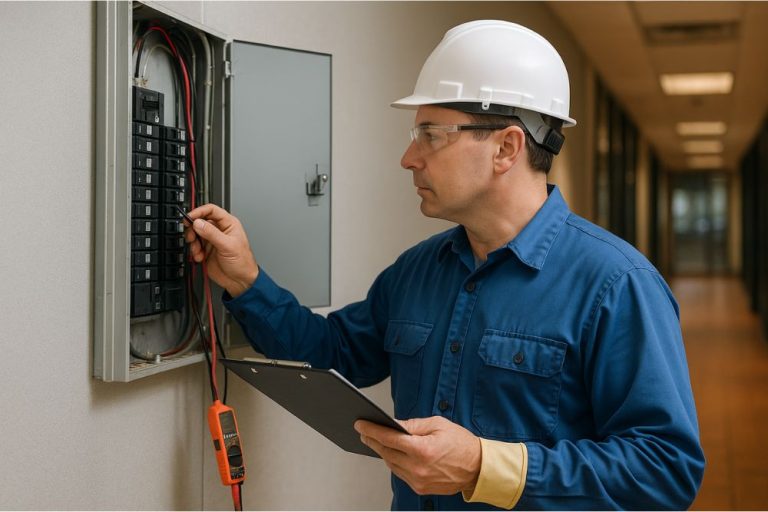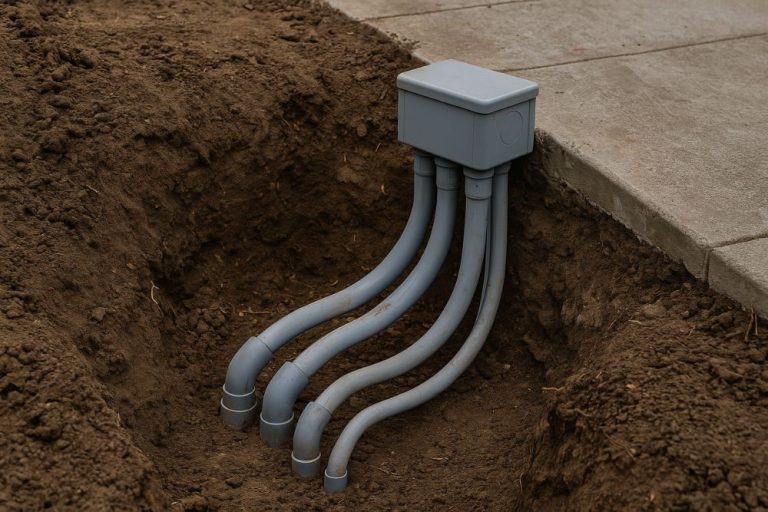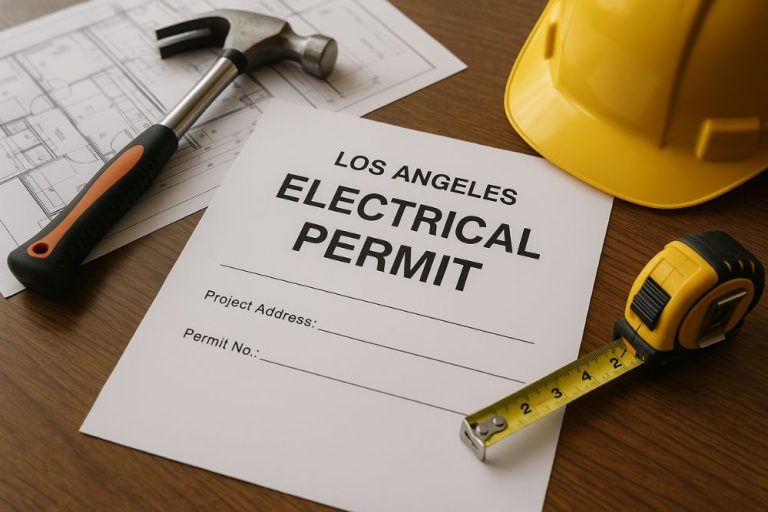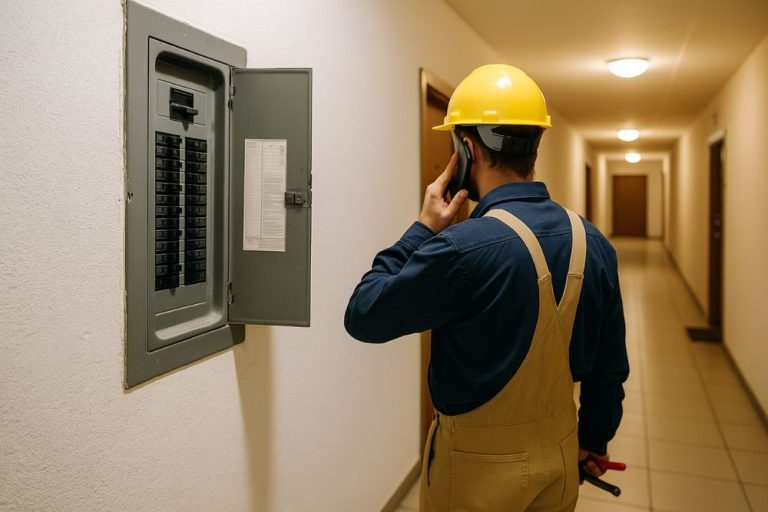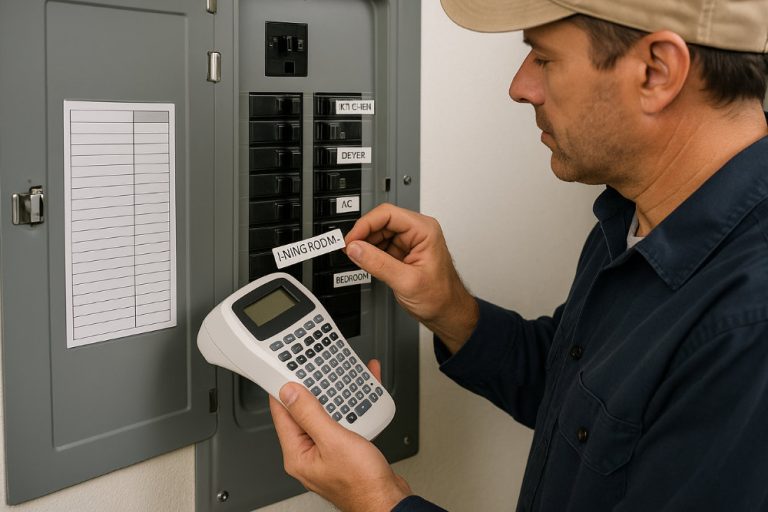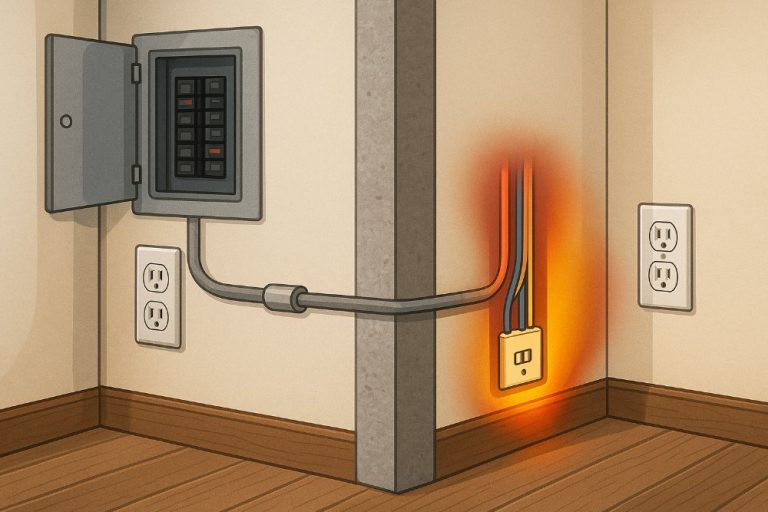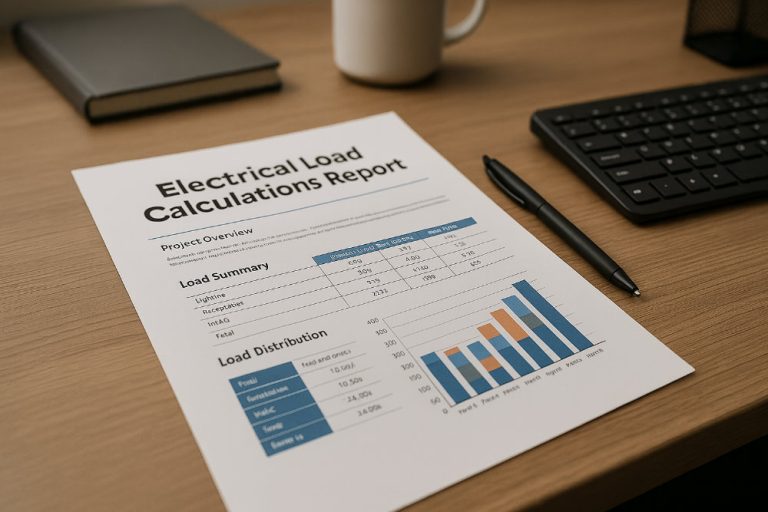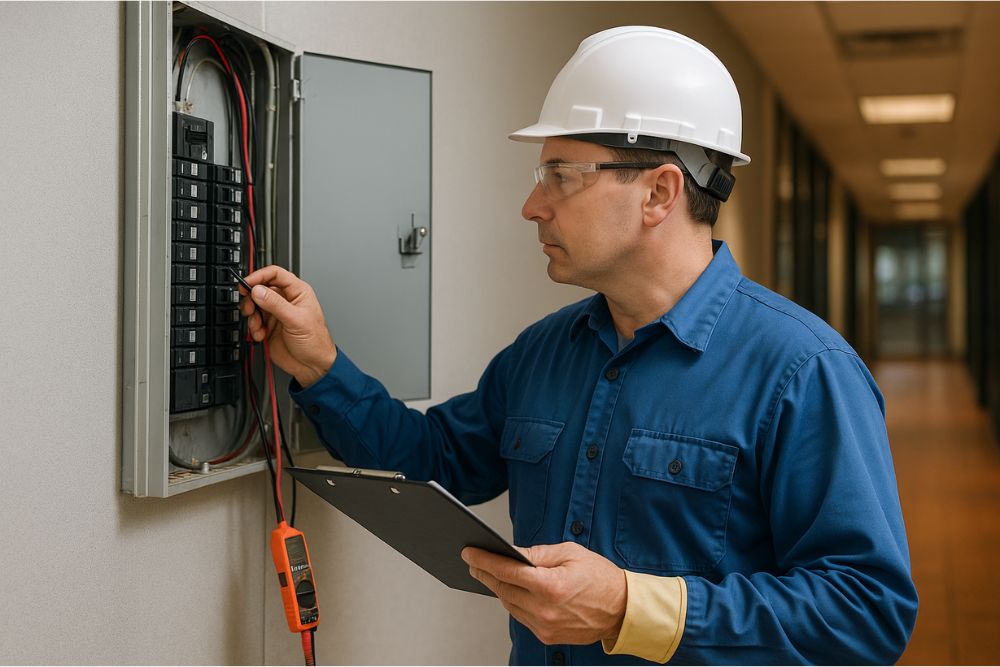
Introduction: Liability Hides in the Walls
In the fast-paced world of Los Angeles property management, electrical systems are often out of sight and out of mind—until something goes wrong. But when a breaker panel overheats, an outlet sparks, or a fire inspector issues a citation, the consequences can be immediate and expensive. Electrical hazards don’t just put tenants at risk—they expose property managers to legal and financial liability.
This is where electrical safety audits come in. A professional audit, conducted by a licensed electrician, examines the hidden parts of your building’s electrical infrastructure. It identifies risks like overloaded circuits, outdated wiring, and code violations before they escalate into emergencies. For multi-unit buildings and commercial properties, this proactive step isn’t just smart—it’s essential for reducing liability.
In this article, we’ll explore why electrical safety audits are critical for Los Angeles property managers, the key problems they uncover, and how they can prevent lawsuits, insurance headaches, and costly downtime.
Why Electrical Safety Audits Are a Must in Los Angeles
Electrical safety audits serve as both a preventive measure and a legal safeguard. In a city full of aging infrastructure and increasing energy demand, many buildings are operating on systems never designed for today’s usage.
Older panels like Zinsco, Federal Pacific, Pushmatic, and Challenger—still common in LA—pose a particular risk. These panels are known to fail during overloads, sometimes allowing wires to overheat without tripping a breaker. If such a failure leads to a fire or tenant injury, liability falls directly on the property owner or manager.
A thorough audit reviews the entire electrical system, including:
- Main and sub-panels: Checking for heat damage, rust, and outdated brands
- Wiring and connections: Identifying frayed insulation, aluminum wiring, or amateur splices
- Load distribution: Ensuring circuits aren’t supporting more than they’re rated for
- Grounding and bonding: Confirming the system can safely redirect faults
- Safety devices: Testing GFCIs, AFCIs, and surge protection systems
Los Angeles property managers also face increasing insurance scrutiny. Many insurers now request proof of electrical system safety before renewing policies, and some require mitigation of known hazards like ungrounded outlets or over-fused circuits.
An audit provides documented evidence of due diligence, reducing exposure if a tenant files a claim or the city performs an inspection.
The Top Hazards Electrical Safety Audits Can Uncover in Your Building
Even if your property seems to be running smoothly, hidden electrical hazards can lurk behind walls, in basements, or underground. A comprehensive safety audit can bring these risks to light before they turn into emergencies.
Overloaded Circuits and Panels
One of the most common problems uncovered in Los Angeles multi-unit properties is overloaded circuits. Tenants today use more high-wattage devices than ever, from air conditioners and microwaves to space heaters and EV chargers. Circuits designed for a fraction of that demand can overheat, damaging insulation and creating a fire risk.
An audit will often include load testing and thermal imaging to identify hotspots. Even if no fire has occurred yet, evidence of past overheating—like discolored outlet covers or brittle insulation—signals that your building is operating beyond its safe capacity. Addressing these loads now can prevent major outages and expensive emergency calls later.
Outdated and Unsafe Panels
Electrical audits often reveal legacy panels like Zinsco, Federal Pacific, Pushmatic, and Challenger. These panels are known for failing to trip breakers during faults, increasing the risk of overheating and fire. Upgrading to a modern, code-compliant panel is not just a safety improvement—it’s also a liability shield for property managers.
In many cases, these older panels have also been modified over the years with double-tapped breakers, mismatched wiring, or missing labeling. Each of these conditions can make troubleshooting more difficult during an emergency. A safety audit documents these conditions clearly and gives property managers the information they need to plan an upgrade.
Improper Wiring and DIY Fixes
Many older buildings contain evidence of decades of quick fixes. Loose connections, ungrounded outlets, and spliced wires hidden in walls can all lead to shorts or arcing. During an audit, a licensed electrician can trace and document these issues, giving property managers a clear roadmap for repairs.
We often find that tenant or handyman-installed wiring—such as added outlets, lighting fixtures, or extension cords in crawl spaces—becomes a hidden source of risk. A single poorly connected wire can trigger a cascading outage or even start a fire. Safety audits reveal these weak links and prioritize corrective actions.
Water Intrusion and Corrosion
In coastal and urban Los Angeles environments, water and electricity often collide in damaging ways. Damp basements, corroded junction boxes, and compromised conduit can all be found during an audit. These problems can quietly weaken a system until a major failure occurs.
Moisture exposure accelerates corrosion on terminals and can create conductive paths where they shouldn’t exist. During an audit, infrared cameras and moisture meters can help pinpoint hidden leaks or early-stage corrosion before it results in a short or shock hazard. Proactive sealing and rerouting can prevent repeat issues.
Missing or Faulty Safety Devices
Audits often uncover missing or non-functional GFCI and AFCI devices, or surge protection that is either absent or outdated. These simple safety features play a major role in preventing shocks, fires, and equipment damage.
A detailed audit checks every outlet and safety device, verifying that each is installed correctly and functions under load. It also reviews whether whole-building surge protection or modern arc fault protection is appropriate for your property, particularly in multi-unit and commercial buildings where simultaneous device usage is high.
By uncovering these hidden hazards, a safety audit arms property managers with the knowledge to address problems before they spiral into legal and financial consequences. Doubling down on these inspections not only reduces emergencies but also gives managers a strategic plan for long-term safety investments.
How Electrical Safety Audits Protect You from Liability
Liability for property managers in Los Angeles is not just about keeping the lights on. It’s about proving that you’ve taken reasonable steps to keep your tenants safe and your building code-compliant. Electrical safety audits are one of the strongest tools you have to demonstrate that diligence.
Documentation That Shields You
A professional audit comes with a written report detailing the condition of your electrical system, any deficiencies found, and recommended upgrades. This report can be presented to insurers, inspectors, and even tenants as proof that you’re maintaining a safe environment.
If an electrical incident ever leads to a claim or legal action, documented audits show that you did not ignore potential hazards. In many cases, this can help reduce liability or support a successful insurance claim.
Insurance and Inspection Benefits
Insurance providers increasingly require proof that your property’s electrical system is safe and updated. Submitting audit documentation during policy renewals or after minor incidents can help avoid premium hikes or coverage issues.
Similarly, Los Angeles Department of Building and Safety (LADBS) inspectors may ask for evidence of system maintenance or upgrades. A recent audit report shows that your property is being responsibly managed.
Preventing Costly Outages and Repairs
Beyond legal and insurance protections, audits prevent costly emergencies that can result in tenant claims. A small investment in proactive safety checks can save thousands in lost rent, temporary housing costs, and emergency electrical repairs.
When you combine regular audits with electrical maintenance services and panel upgrades, you significantly lower both operational risk and liability exposure.
Why Partnering with RG Electric Makes Safety Audits Easy
Scheduling an electrical safety audit might feel daunting, but RG Electric makes the process simple and stress-free. Our licensed electricians specialize in multi-unit and commercial properties throughout Los Angeles, and we understand the unique needs of property managers.
When you work with us, we handle every step: coordinating inspections, performing a thorough assessment of your building’s electrical infrastructure, and providing clear documentation with actionable recommendations. We also manage any necessary permits and work with LADBS to ensure compliance at every stage.
Our team focuses on minimizing tenant disruption while maximizing safety. If an audit reveals immediate hazards, we can often perform repairs or upgrades on the same visit—or schedule them promptly with full transparency on costs and timelines.
With RG Electric, you’re not just getting a safety audit—you’re getting a partner dedicated to keeping your property protected, compliant, and tenant-approved. Fill out the form on this page or call (323) 521-5131 to schedule your audit today and gain peace of mind before the next inspection or tenant complaint.
Disclaimer: Always consult a licensed electrician like RG Electric before performing electrical work. All services are performed to code and with proper permits.


 Call (323) 5215131
Call (323) 5215131

